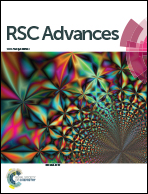Immobilization of microorganisms for AFM studies in liquids
Abstract
In this paper a new sample preparation method is described that allows for the in vivo AFM imaging of a wide range of different microorganisms. The primary focus of this work was the immobilization of fixed and living cells of various microorganisms on substrates. The tested organisms of interest were Gram-negative and Gram-positive bacteria, yeast, and algae. The immobilization of the biological samples on a sample holder is crucial for AFM. Lateral forces of the probe tip can alter or remove sample material during scanning. This effect occurs especially on soft biological samples, which causes artifacts within the imaging and leads to a loss in quality and structural information. For the immobilization organisms were deposited on polyelectrolyte coated surfaces by centrifugation. Microorganisms were imaged without the use of any drying steps including either living or with glutaraldehyde fixation. Glutaraldehyde fixation enables long time scans that cover wide areas or the investigation of organisms in special growth stages, such as cell division or budding. Skipping fixation steps allows in vivo imaging to investigate living organisms and cellular processes under physiological conditions. A method for the reliable and efficient immobilization of microorganisms has been demonstrated by imaging the proteinaceous surface layer (S-layer) of living Lysinibacillus sphaericus and Viridibacilli arvi cells. In additional experiments, cell division of E. coli was successfully imaged. During repeated wide area scans, fixed sample material was not removed by the AFM tip, proving the suitability of these methods for AFM analyses. Ultimately, this method can be easily applied for the immobilization of a wide range of microorganisms and in vivo imaging of whole cells and cell ultrastructure.


 Please wait while we load your content...
Please wait while we load your content...